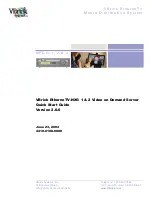
Cause
• The memory does not meet server requirements.
• A DIMM has failed.
• Third-party memory is installed on the server.
• The DIMM is not properly seated.
Action
• Isolate and minimize the memory configuration. Use care when handling DIMMs.
• Be sure that the DIMMs meet the server requirements and is installed as required by the server.
Some servers might require that memory channels are populated fully or that all memory within a
memory channel is of the same size, type, and speed.
• Check any server LEDs that correspond to memory slots.
• Remove any third-party memory.
• Update the system ROM to the latest version.
• Reseat the DIMM.
• Replace the DIMM.
More information
Isolating and minimizing the memory configuration on page 101
Updating firmware or system ROM on page 147
DIMM handling guidelines on page 21
Server documentation on page 167
Server maintenance and service guide on page 167
Isolating and minimizing the memory configuration
When troubleshooting memory issues, sometimes it is necessary to isolate DIMMs in a minimum
configuration to determine which DIMM failed.
Prerequisites
Use care when handling DIMMs.
Procedure
1.
If you are unsure which DIMM has failed, test each channel of DIMMs by removing all other DIMMs.
2.
Isolate the failed DIMM by switching each DIMM in a channel with a known working DIMM.
More information
DIMM handling guidelines on page 21
Hardware issues
101
















































